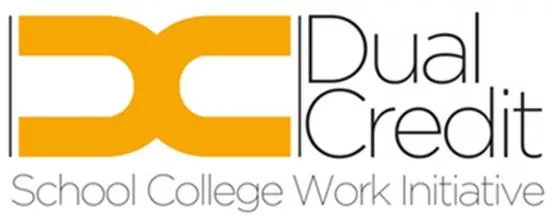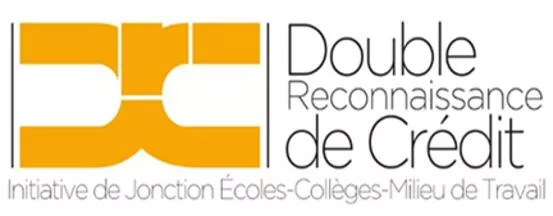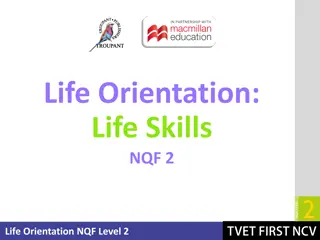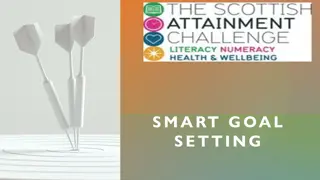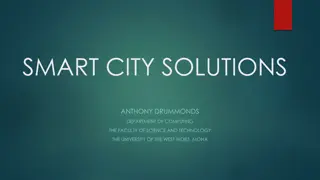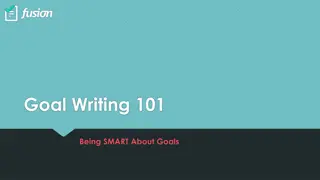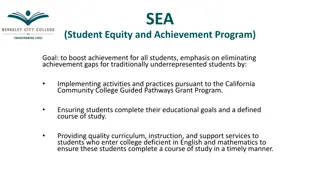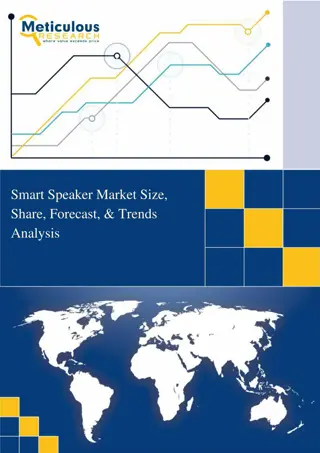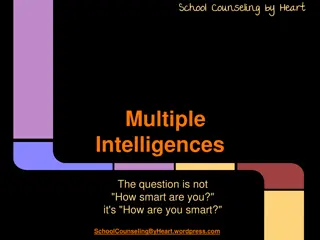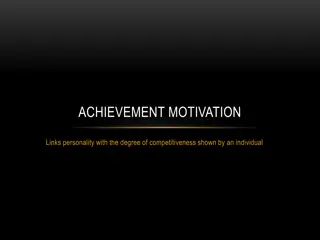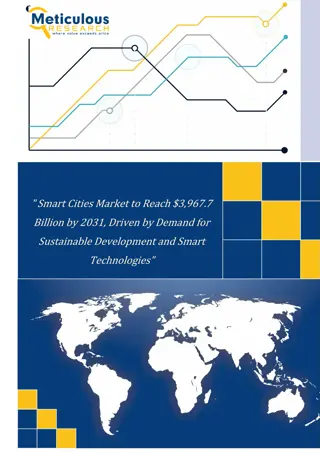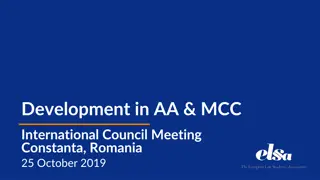Maximizing Goal Achievement through SMART Goals
Enhance goal-setting practices for optimal student and program outcomes by following SMART criteria: Specific, Measurable, Attainable, Results-Oriented, and Time-bound. Learn how to create impactful goals, set ambitious yet achievable targets, and ensure regular review and assessment for success.
Download Presentation

Please find below an Image/Link to download the presentation.
The content on the website is provided AS IS for your information and personal use only. It may not be sold, licensed, or shared on other websites without obtaining consent from the author.If you encounter any issues during the download, it is possible that the publisher has removed the file from their server.
You are allowed to download the files provided on this website for personal or commercial use, subject to the condition that they are used lawfully. All files are the property of their respective owners.
The content on the website is provided AS IS for your information and personal use only. It may not be sold, licensed, or shared on other websites without obtaining consent from the author.
E N D
Presentation Transcript
Report Creation to Emphasize SMART Goal Acquisition SCWI Symposium May 2015
SMART Goal Considerations RPTs are expected to set and review goals annually SMART goals should be based on a review of data be impactful to your students and programs respond to an urgent and critical need be capable of delivering the most gain in student achievement
SMART Goals Specific Measurable Attainable Results-Oriented Time-bound
SMART Goals Specific and student focused. Does the goal represent the greatest area of need for some or all students?
SMART Goals Measurable Has a baseline been established? How can we measure if the targets have been achieved? Are targets identified? Are targets sufficiently ambitious?
SMART Goals Targets (Reeves) Attainable Is the goal reasonable? What is the evidence? Is the goal ambitious yet attainable? Quartiles 1st (0-24%) 2nd (25-49%) 3rd (50-74%) 4th (75-100%) Increase 20% 12% 7% Approx. 4%
SMART Goals Results-Oriented Why is it important to achieve this goal? For students? Staff? Schools? Colleges? Programs?
SMART Goals Time-bound What is the timeframe for achieving this goal? (Based on K-12 Improvement of Planning Assessment Tool, 2011-12)
SMART Goals Process Needs Assessment based on data Year end review of SMART Goal success Identification of SMART Goals Identification of strategies to contribute to achievement of SMART Goals Regular Review to ensure on target to achieve goals 9
Sample SMART Goals Increase student success rate by 17%, from a baseline of 73% in 2013-14 to 90% by the end of June 2015. Is this example SMART? Could it be SMARTer ? Specific Measurable Attainable Results-Oriented Time-bound 10
Sample SMART Goals Increase the retention rate of dual credit student participants to 90% Is this example SMART? Could it be SMARTer ? Specific Measurable Attainable Results-Oriented Time-bound 11
Where can I get data? Board s data warehouse School s Student Management System/College s Management Systemm Class records Enterprise Data Collection System (EDCS) Ontario College Application Service (OCAS) Regional Planning Team s SMART Goal Report 12
Why Are SMART Goals Important? Improve outcomes for students Improve program quality Program approvals and re- approvals based on data 13
Proposal Approvals and Re-Approvals Criteria used for decision making Approved vs. Actual students Retention Success % of students in target group for whom the dual credit program was designed 14
Approved vs. Actual Student Participants In 2013-14, approved vs actual student participants was 92% SMART goal report sample Actual Number of Students Approved Number of Students Program Name % Motorcycle Repair Techniques 22 22 100% EDCS Data 15
Approved vs. Actual Student Participants In 2013-14, approved vs actual student participants was 92% SMART goal report sample Actual Number of Students Approved Number of Students Program Name % Motorcycle Repair Techniques 22 22 100% Aesthetics 36 20 56% 16
Target Groups Primary Target Group Specialist High Skills Majors Ontario Youth Apprenticeship Program In EDCS, Profile of Students Who Started the Program 17
Target Groups Program primarily designed for Total Number of Students % of % of OYAP Students % of SHSM Students Program Name Disengaged Students Motorcycle Repair Techniques Primary 22 0% 18% 100% Aesthetics SHSM 20 10% 20% 50% 18
EDCS Extracts *Board- and college-specific reports available **Board-specific report available L18DC501 L18 Dual Credits Total Approved Funding Extract L18DC502 L18 Dual Credits Form 1 RPTs Extract L18DC503 L18 Dual Credits Form 2 Activities + Forums Extract* L18DC504 L18 Dual Credits Form 3 Dual Credit Extract* L18DC505 L18 Dual Credits Board and College Funding Extract L18DC506 L18 Dual Credits Student Data Report Raw Stats Extract** L18DC509 L18 Dual Credits Transportation Funding Extract
EDCS Extracts Common elements: Date RPT # Program # Program name Approach School Within A College indicator RPT totals L18DC504 L18 Dual Credit Form 3 Dual Credits Extract L18DC506 L18 Dual Credits Student Data Report Raw Stats Extract
EDCS Extracts L18DC506 L18 Dual Credits Student Data Report Raw Stats Extract Data provided at end of each semester by project on students and their successes Changes after interim and final data submission L18DC504 L18 Dual Credit Form 3 Dual Credits Extract Details specific to proposed, approved and actual programs, student numbers and finances Changes with initial approvals and each contract change cycle and after the interim and final data submissions
L18DC504 L18 Dual Credit Form 3 Dual Credits Extract Details specific to proposed, approved and actual programs, student numbers and finances Changes with each contract change cycle and after the interim and final data submissions New or existing dual credits Delivery mode (Day, night, SWAC, online, summer) Proposed, approved and actual number of students Projected number of students for next two years Course details (course name, type, codes, hours, location) Requested and approved number of students by course by program Funding details by course and totals by program (board and college benchmarks, seat purchase funding, transportation and miscellaneous funding)
L18DC506 L18 Dual Credits Student Data Report Raw Stats Extract Data provided at end of each semester by project on students and their successes Proposed and approved student numbers Projected credits by semester Information on students typically by age, gender, semester, and total: Number of students who started/finished Identification, Placement, Review Committee (IPRC) Individual Education Plan (IEP) Number of students by target group (primary target group, SHSM, OYAP) Number of students who had previously left school Credits attempted and earned Courses/apprenticeships attempted and earned Other secondary school credits potential and earned
Notes on Extracts Check the first row correct year? Excel document does not contain formulas
SMART Goal Formulas Measure (Extract) Percentage Approved vs Actual Funding Expenditures (504) - Total approved funding - Total funding expenditures - Total approved funding divided by total funding expenditures multiplied by 100 Formula = AW = AX = AX AW X 100
SMART Goal Formulas Measure (Extract) Success Rate (506 Extract) Credits earned divided by credits attempted multiplied by 100 Retention Rate (506 Extract) - Total # of students who started Formula =(DL/DI) x 100 =W+BA - Total # of students who finished =AL+BP - Total # of students who finished divided by total # of students who started multiplied by 100 = (AL+BP) (W+BA)X 100
SMART Goal Formulas Measure (Extract) % of Students in Primary Target Group (506) - Number of students in the primary target group - Total number of students who started the program - Number of students in the primary target group divided by the total number of students who started the program multiplied by 100 Formula = CK = W+BA = CK (W+BA)X 100
SMART Goal Formulas Measure (Extract) Percentage Approved vs Actual Number of Students (506) - Number of approved students - Total number of students who started the program - Total number of approved students divided by total number of students who started multiplied by 100 Formula = F = W+BA = F W+BA X 100
Contact Us Dez Collins (Desmond.Collins@nearnorthschools.ca) Sonja Vandermeer (SVandermeer@OPSOA.org )
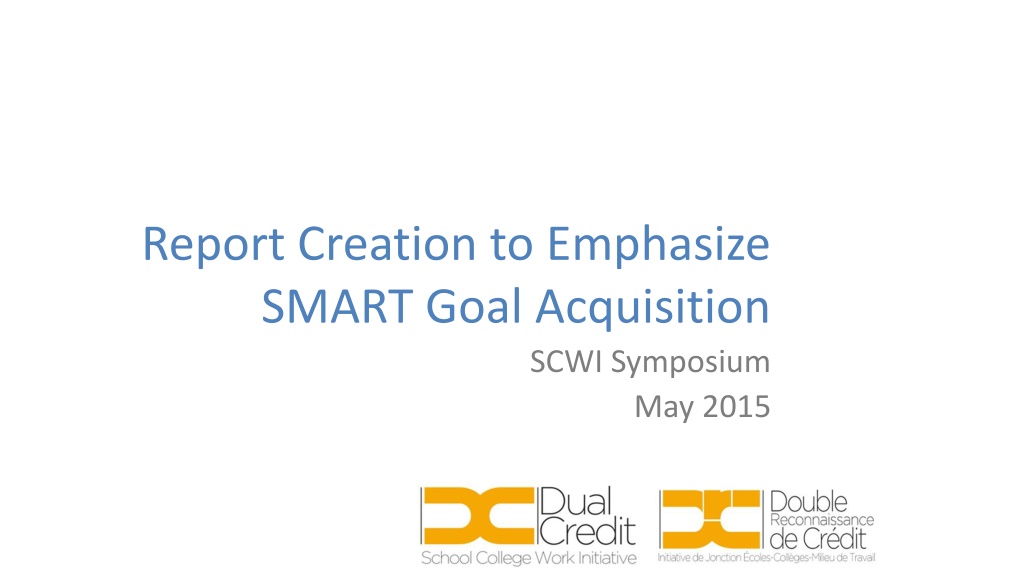
 undefined
undefined